Posts Tagged: predator
The Crab Spider and the Bee
It was a good day for a crab spider. It was NOT a good day for a honey bee. It's early evening and here's this bee foraging on a bluebeard plant,...
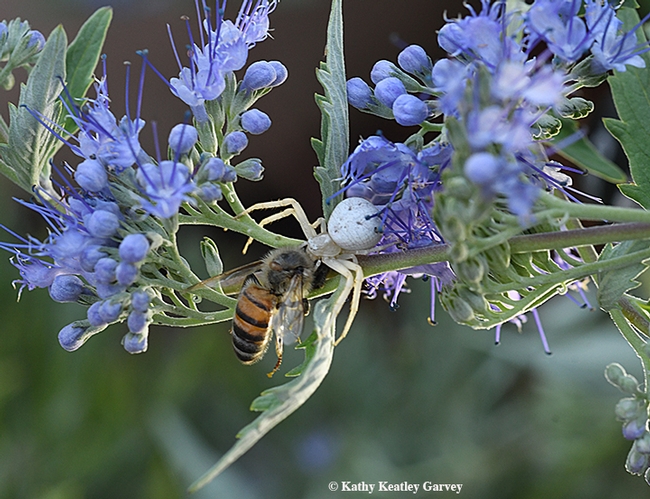
A crab spider has just ambushed a honey bee on a bluebeard blossom. (Photo by Kathy Keatley Garvey)
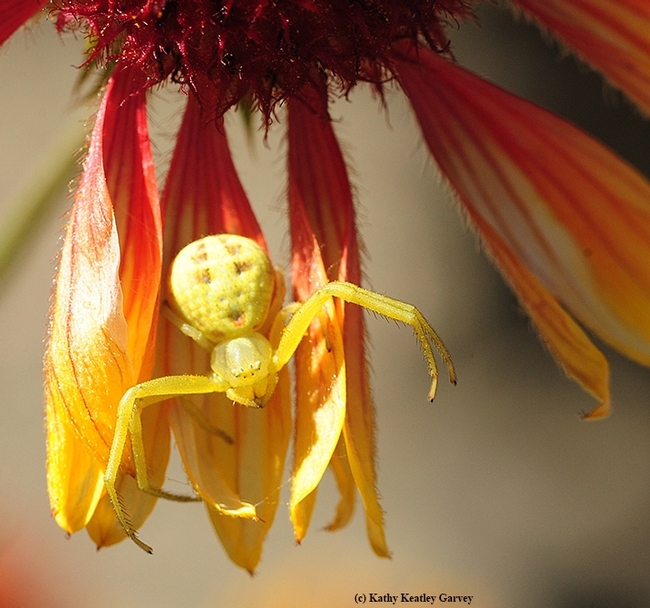
The crab spider can turn colors from white to yellow or yellow to white This one is yellow, awaiting prey on a blanketflower, Gallardia. (Photo by Kathy Keatley Garvey)
What's for Dinner? How About a Green Bottle Fly?
What's for dinner? A crab spider, camouflaged in our lavender patch, didn't catch a honey bee, a butterfly, an ant or a syrphid fly. No, it nailed...
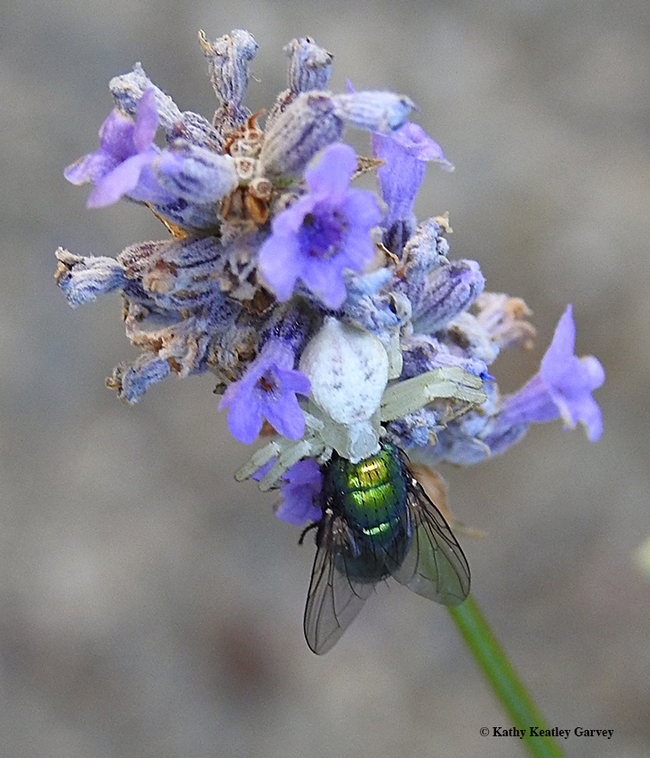
A crab spider dines on a green bottle fly in a lavender patch in Vacaville, Calif. (Photo by Kathy Keatley Garvey)
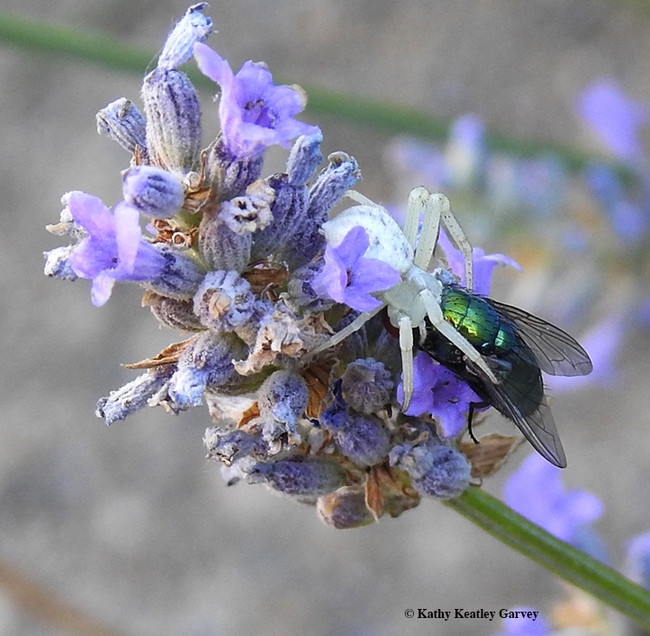
The crab spider is camouflaged, but its prey, a green bottle fly with its familiar metallic blue-green coloring, isn't. (Photo by Kathy Keatley Garvey)
Henrietta and the Drone Fly: The Predator and the Prey
Henrietta, our Stagmomantis limbata praying mantis, perches on a Mexican sunflower (Tithonia). She is as patient as she is persistent. The drone...
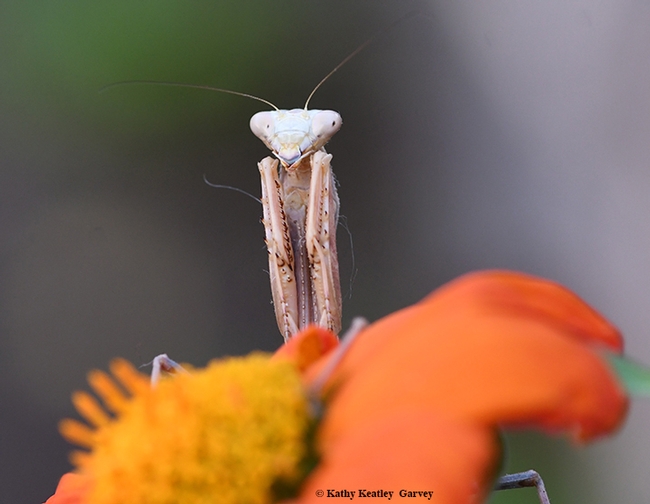
Henrietta, our Stagmomantis limbata praying mantis, lies in wait on a Mexican sunflower (Tithonia.) (Photo by Kathy Keatley Garvey)
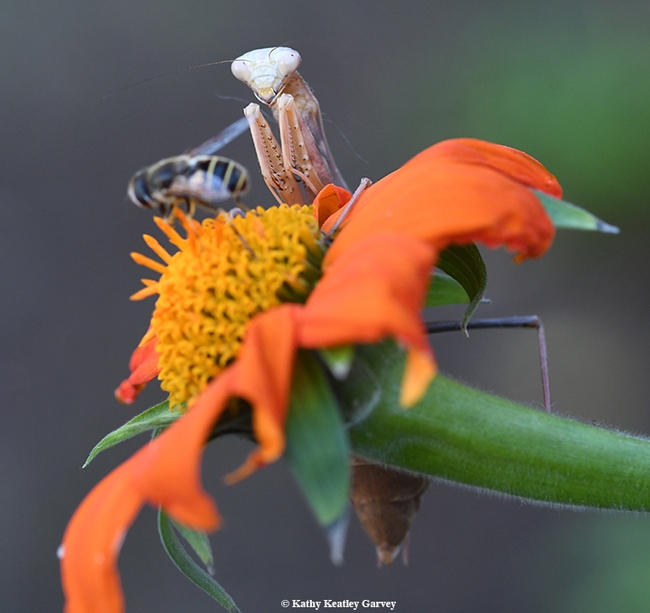
A drone fly (syrphid) lands on the blossom as a hungry praying mantis watches intently. (Photo by Kathy Keatley Garvey)
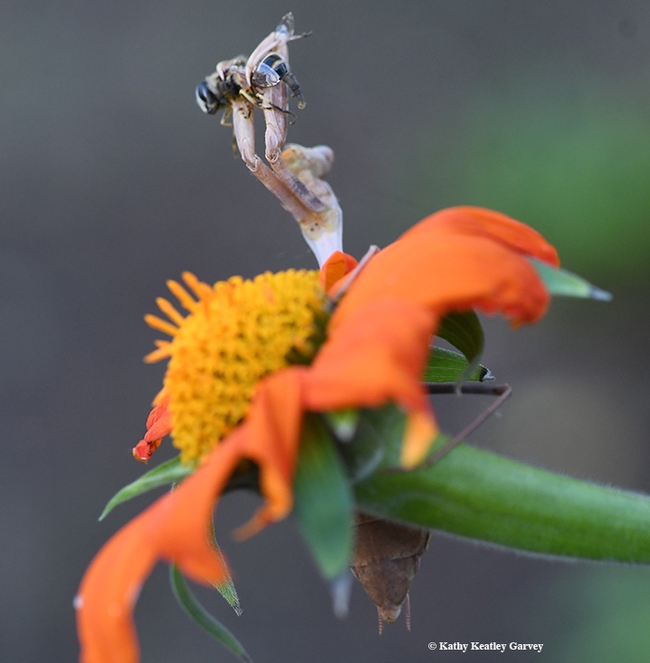
One quick move and praying mantis has dinner. (Photo by Kathy Keatley Garvey)
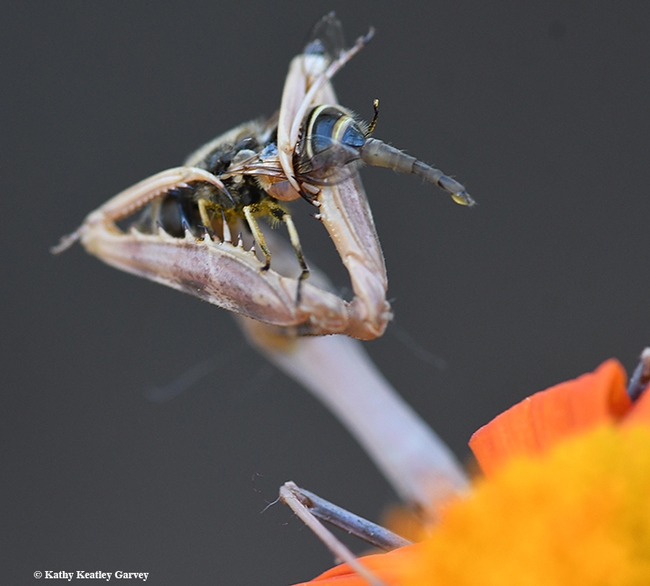
The spiked forelegs hold the prey in place. (Photo by Kathy Keatley Garvey)
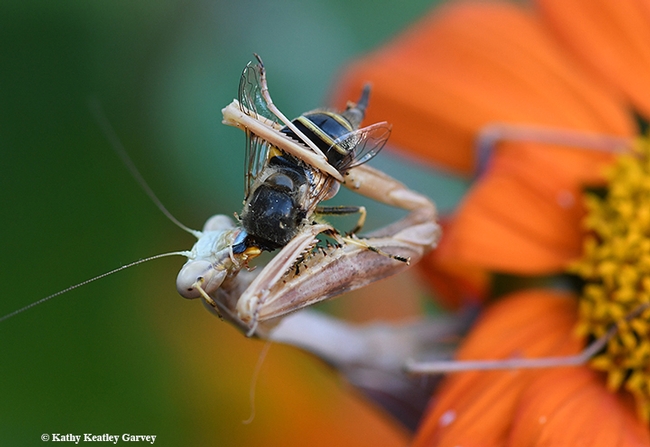
It's eat and be eaten in the garden. (Photo by Kathy Keatley Garvey)
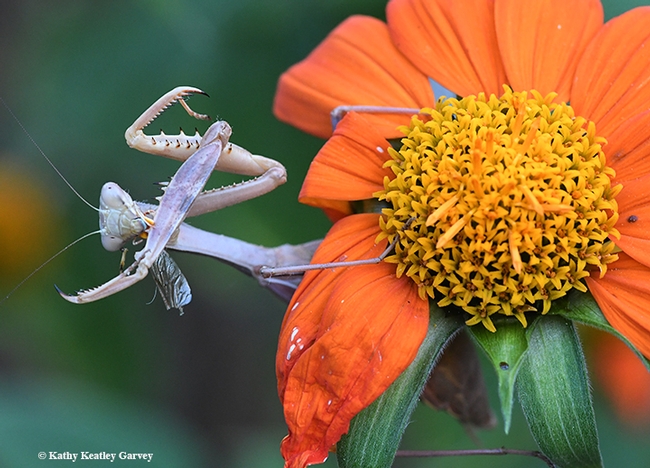
Henrietta the praying mantis polishes off the last of the fly but a wing is visible evidence of what happened. (Photo by Kathy Keatley Garvey)
How Do Insects, Spiders React to a Partial Solar Eclipse?
The sky darkens. The temperature drops several degrees. A breeze rustles the leaves of the African blue basil. Dogs bark. And off in the distance, a...
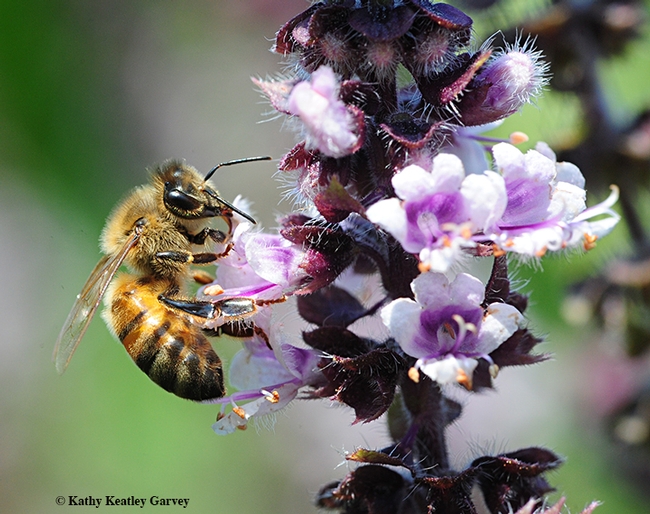
A honey bee nectaring on African blue basil during the partial solar eclipse in Vacaville, Calif. (Photo by Kathy Keatley Garvey)
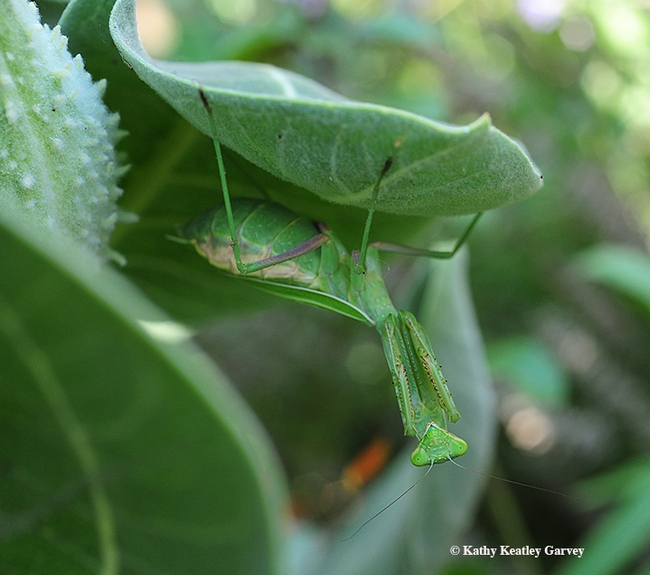
A praying mantis, a female Stagmomantis limbata (as identified by Andrew Pfeifer) lurks beneath a milkweed leaf during the partial eclipse in Vacaville, Calif. (Photo by Kathy Keatley Garvey)
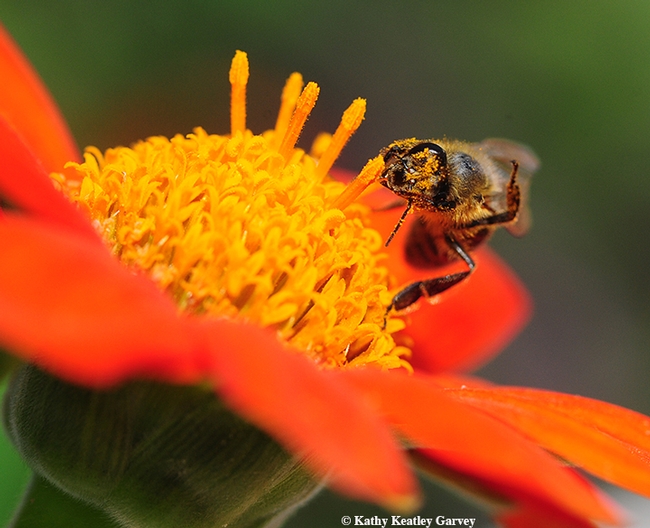
A pollen-coated honey bee ignores the eclipse and forages on a Mexican sunflower (Tithonia). (Photo by Kathy Keatley Garvey)
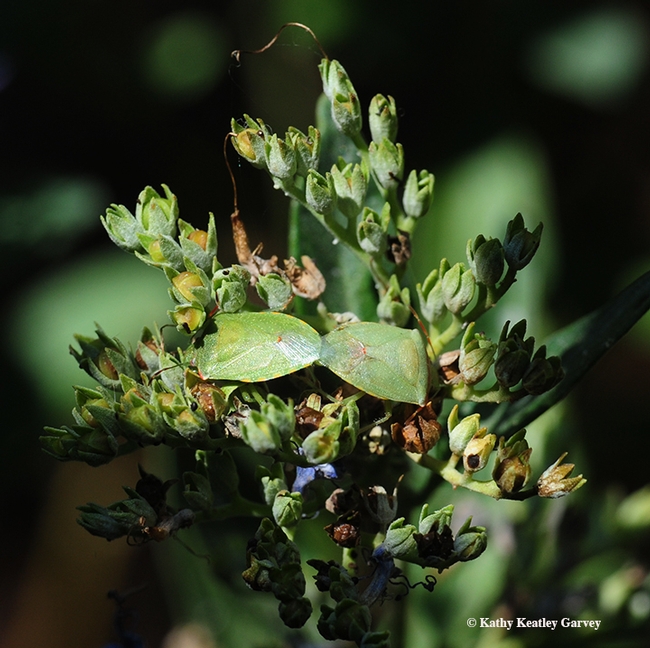
Two stink bugs on a bluebeard,Caryopteris x clandonensis. (Photo by Kathy Keatley Garvey)
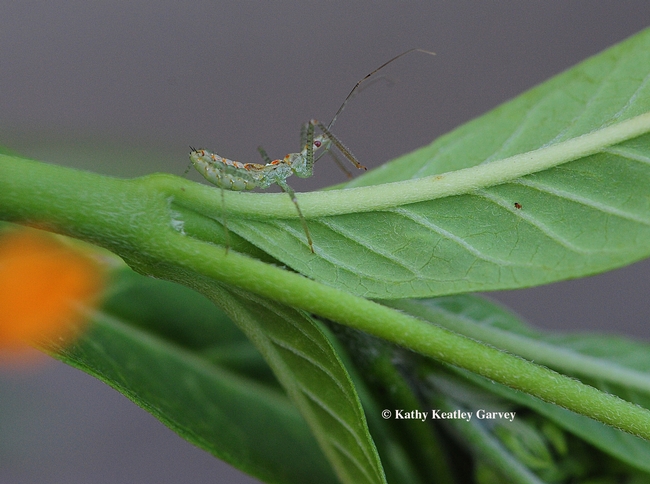
An assassin bug looking for prey. It's on a tropical milkweed. (Photo by Kathy Keatley Garvey)
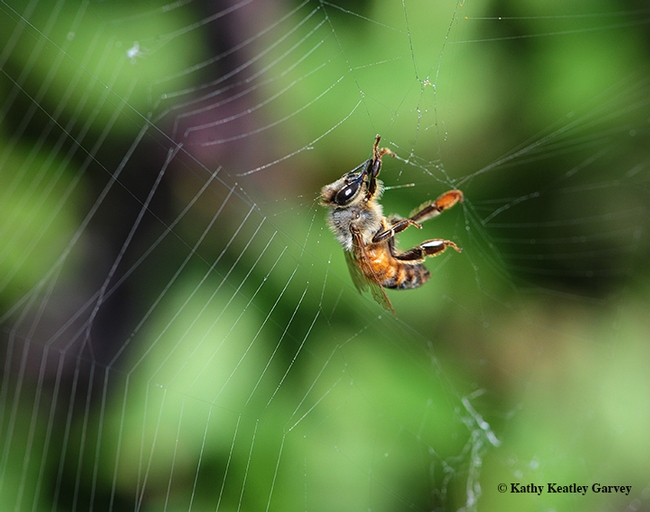
A honey bee trapped in a web (and freed by the photographer). It was the spider's second catch of the day. (Photo by Kathy Keatley Garvey)
There's an Assassin in Your Garden
Ever seen assassination attempts in your garden? They are not pretty if you're the prey. Neither are the successful attempts. Take the Zelus...
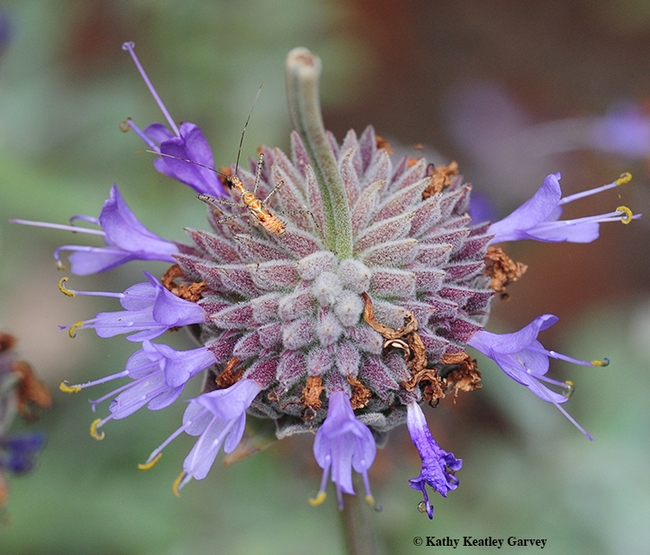
Can you find the nymph assassin bug on this Cleveland sage? This bug belongs to the genus Zelus. (Photo by Kathy Keatley Garvey)
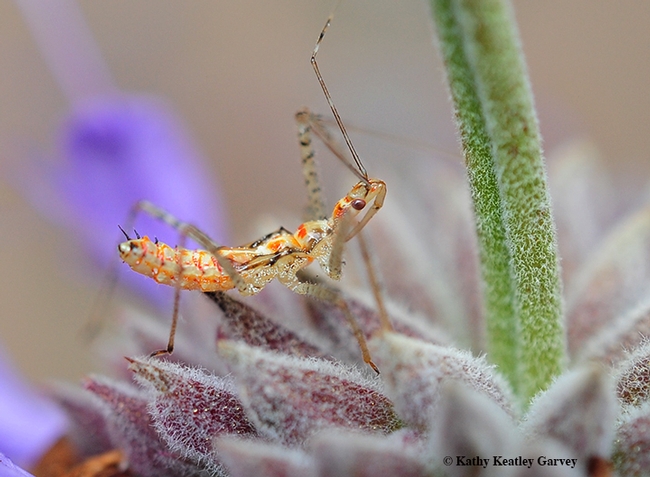
A nymph assassin bug strikes a pose on Cleveland sage. (Photo by Kathy Keatley Garvey)
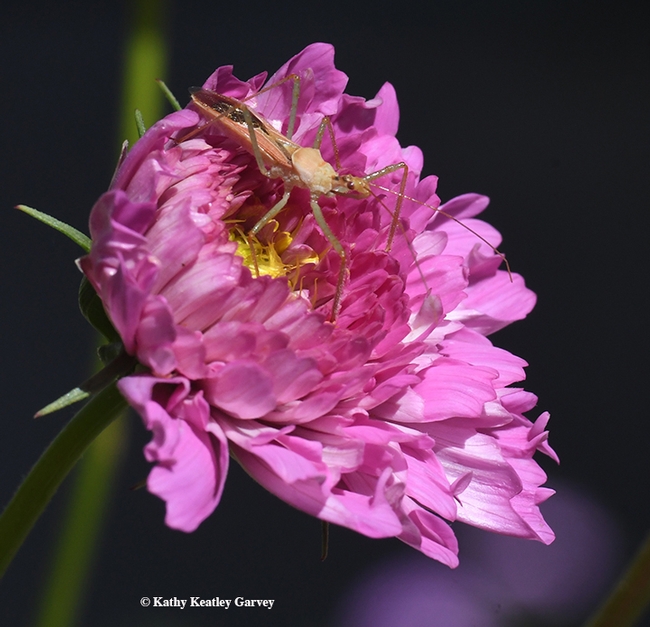
This adult assassin bug, Zelus renardii, is ready to ambush prey on a double cosmos blossom. (Photo by Kathy Keatley Garvey)
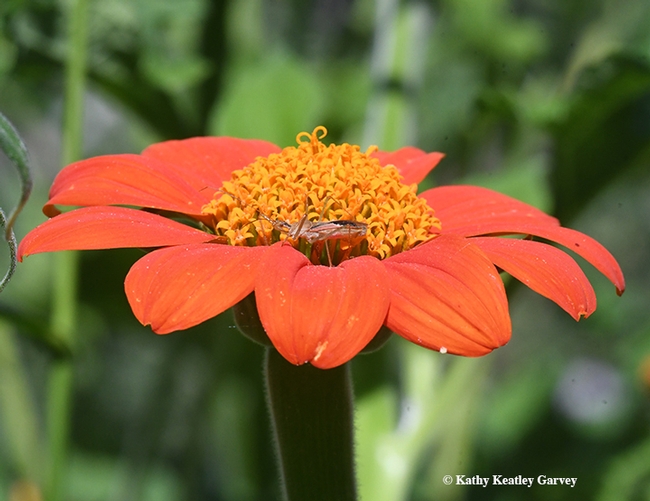
This adult assassin bug lurks almost unnoticed on a Mexican sunflower, Tithonia. (Photo by Kathy Keatley Garvey)
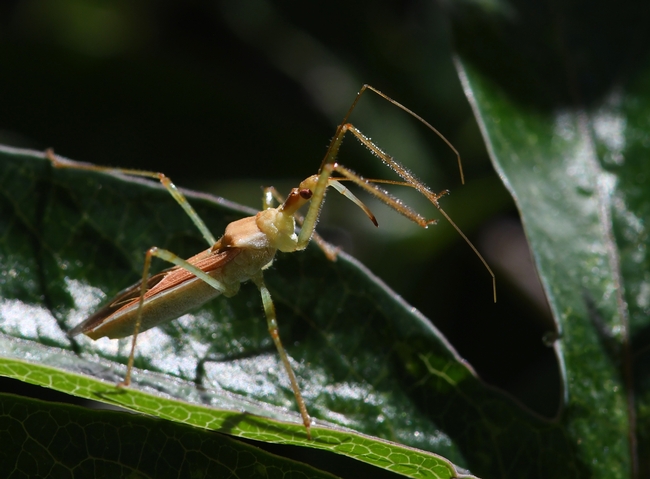
The predator: the assassin bug. This one is lying in wait on a nectarine leaf. (Photo by Kathy Keatley Garvey)
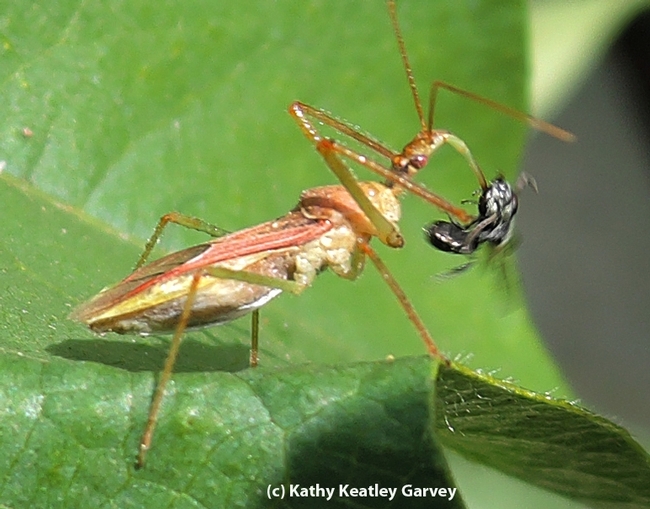
Gotcha! An assassin bug spears a male metallic sweat bee. (Photo by Kathy Keatley Garvey)

